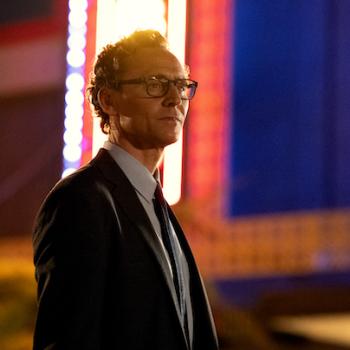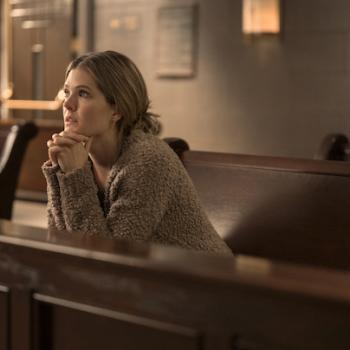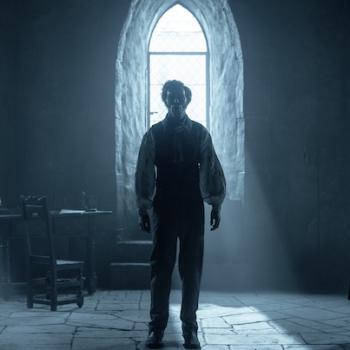
2. Belle and the transformative power of love
If you have a chance, take a look at this 2014 blog post from Evan at Holy Smack, which draws some pretty fascinating connections between Belle and centuries of Catholic symbolism–from Belle’s blue dress to the lambs she reads/sings to at the town fountain. “Belle is Mary, and Mary is the God-bearer, and God is love … so Belle carries love,” he writes.
While I’m not sure if Beauty and the Beast’s original creators intended all of that, I think we can all agree that the last part of Evan’s statement is absolutely intentional. Belle carries love. Or, at least, the promise of love.
Everyone in the enchanted castle feels it when Belle (Emma Watson) shows up. They hope that, perhaps, the curse might be broken after all. Beast isn’t so sure. He’s quite unlovable, and he knows it.
Just like we all feel at times, right? We may look more like men and women than Beast does—created in God’s image and all—but we feel the sin and selfishness in our own hearts. We know that, sometimes, we can be quite beastly, even to the ones we love the most. We’re fallen, too. Twisted.
As Christians, we’re taught that there’s only one real way to be cleansed of that sin and get rid of the beasts within us, and that’s through God. But how would that even be possible? Why would God want anything to do with us? We’re monsters.
Beauty and the Beast isn’t a perfect metaphor, of course. Disney wants to tell us a love story, not hand us a Christian allegory. In the movie, it takes Belle a while to see through Beast’s hairy visage and angry tantrums, to see something worth loving.
And yet the salvific mechanisms are in place: Beast brings Belle to his castle, just as we invite (hopefully a bit more politely than Beast) God and His saving love into our lives—the first and last step in our own journey to redemption. As time goes on, Belle changes Beast—makes him better—just as our relationship with God should make us better. And most importantly [oh, spoiler alert, I suppose, for the two people who haven’t seen the 26-year-old cartoon] Belle winds up loving Beast even when he’s still a beast: He doesn’t turn into a handsome prince before Belle’s tears lift the curse; he does so after. He’s loved in spite of what he is, what his own sin turned him into.
And so it is with us. Beast dies in Belle’s arms—dies to himself, you might say—but is resurrected through love, a new man.













